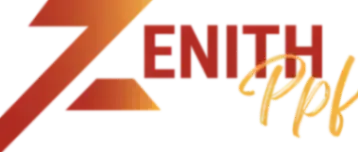Why Choose PPF?
Why Choose PPF?
Enhanced Protection
Paint Protection Film (PPF) acts as a sacrificial barrier between your vehicle’s paint and the elements. Road debris, stones, sand, and salt can all damage unprotected paint. With PPF, the film absorbs the impact, leaving the paint unharmed. This is especially valuable in areas with gravel roads or during winter when sand and salt are spread on highways.
Beyond impact resistance, PPF resists staining from bug splatter, tree sap, and bird droppings. These substances can etch paint if not removed quickly. PPF’s surface coating blocks penetration, making contaminants easy to wipe away. It also resists acid rain and industrial fallout, which can dull or corrode clear coat over time.
Longevity and Cost Savings
One of the biggest reasons car owners choose PPF is its durability. High-quality films, when professionally installed and properly maintained, can last 5–10 years. This long-term protection covers a large portion of your vehicle’s lifespan. While PPF is an investment, it often costs less than repainting panels damaged by chips or scratches.
Resale value also benefits from PPF. Vehicles with flawless paint are more appealing to buyers, often selling faster and at a higher price. Removing the film before selling reveals paint that looks nearly new.
Additionally, PPF reduces the need for frequent touch-ups or polishing. Maintenance still matters—like regular washing and keeping the film clean—but the protective layer takes the wear instead of your paint.
Preserving Aesthetics
Because PPF is optically clear, it preserves your car’s original color and gloss. This is especially important for luxury and rare vehicles where authenticity matters. Unlike some coatings that can add thickness or distortion, PPF virtually disappears once applied.
Self-healing properties also enhance aesthetics. Minor scratches from washing or daily use fade away when the film warms up. Many modern films even feature hydrophobic top coats that repel water and dirt, making washes easier and reducing water spots. Pairing PPF with a ceramic coating maximizes both protection and ease of maintenance.
Compatibility and Flexibility
PPF can be applied to nearly all paints and clear coats—whether protecting a brand-new car or preserving a restored finish. Unlike vinyl wraps, which are designed for aesthetics, PPF can be removed and replaced without affecting your paint.
You can even apply vinyl wraps on top of PPF for both style and protection, or refresh the PPF after a new paint job. This flexibility makes it an excellent long-term choice for car enthusiasts and daily drivers alike.
Protect your paint with Zenith PPF’s film for lasting results.
Cost and Budget Considerations
While PPF requires an initial investment, spreading that cost over its years of service highlights its value. Repainting due to chips, scratches, or sandblasting often exceeds the cost of film installation. Partial packages (front bumper, hood, mirrors) balance coverage with affordability.
Many installers also offer financing options, making protection more accessible. Always compare quotes, confirm warranty details, and ensure the installer is certified.
Real-World Examples
Drivers often share experiences proving PPF’s worth:
A sports car owner who drives track days reports the film has absorbed countless rock strikes while keeping the paint perfect.
A commuter on gravel roads finds her five-year-old car still looks new thanks to PPF’s protection from chips and sandblasting.
These stories highlight PPF’s ability to perform in tough conditions.
Professional Installation vs. DIY
DIY kits exist, but professional installation ensures proper alignment, dust-free application, and seamless coverage. Certified shops use pre-cut templates and controlled environments for precision. They also offer warranties on both the film and their work, adding peace of mind.
Attempting a DIY job often leads to bubbles, seams, or poor adhesion that may cost more to fix later. For something as valuable as your vehicle’s finish, professional installation is worth it.
PPF vs. Other Protective Options
While PPF shields against physical damage, products like ceramic coatings and waxes focus on chemical and UV protection. Wax offers shine but wears off quickly. Ceramic coatings last longer and add hydrophobic properties but can’t absorb impacts. Combining PPF with ceramic coating provides complete protection—impact resistance plus easier cleaning.
Frequently Asked Questions
Does PPF change how the paint feels? No. High-quality films are smooth and match factory clear coat texture.
Can PPF be used on headlights and mirrors? Yes, specialized films are designed for these surfaces.
How long does PPF last? With proper care, professionally installed films often last 5–10 years (source: 3M Automotive Division).
Always consult with a certified installer to determine the best coverage for your car.


